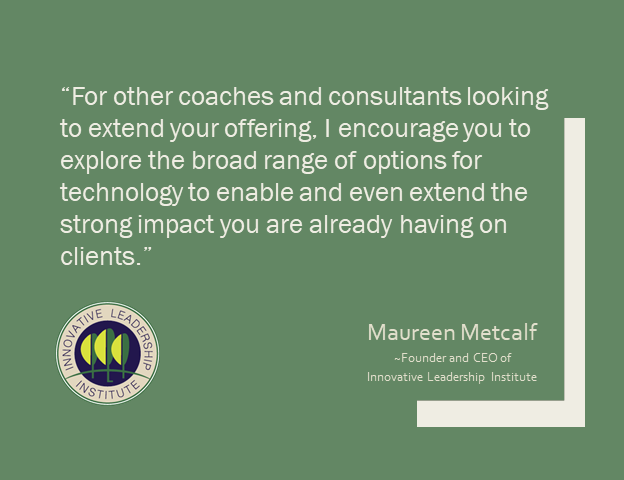Seeking Success in Simplicity: Balancing Innovation and Process Excellence
Rini Das, founder of RD Management Consulting, shared this article as a companion to her podcast Seeking Success in Simplicity.
| Podcast intro from “Faux Mo:” an ILI AI experiment.
Short clip from the interview: |
Link to the entire interview: |
Listen to the companion interview and past episodes of Innovating Leadership: Co-Creating Our Future via Apple Podcasts, TuneIn, Stitcher, Spotify, Amazon Music, Audible, iHeartRADIO, and NPR One.
Late in February 2020, when the COVID pandemic hit the United States, not only did we face a deadly virus affecting every bit of our lives, we also experienced a massive supply chain meltdown. The man-made shortages ensued from reckless communications from political leaders and their “disinformation”-mongering invectives amplified via social media channels.
Amidst that situation, the consummate operational excellence professionals and tech innovators like me watched in silent horror seeing how our decades-long efforts did not yield the resilience we thought we had built. After decades of helping companies become highly resilient to many adverse external conditions and organizations become agile and lean in a smart way, we saw them fail or fall face-flat to the ground.
Of course, travel, entertainment, hospitality, restaurant, and other industries that were dependent on in-person, real-time interactions suffered the most with a global shutdown. But, more importantly, overall mortality and morbidity of the human race significantly changed because of a lack of medical supplies. I conjecture that the supply chain shortages of personal protective gear and equipment, cleaning supplies, test kits and medical supplies led to more deaths than we should have experienced.
Beyond the chaos that was induced by weak and corrupt political leaders, we saw a longer-term effect on manufacturing and all other industries that spend money to buy manufactured goods. For example, almost all devices, transportation vehicles, homes, virtually everything that we use these days requires silicon chips. If you Google search “chip shortage and Covid 19,” you will find innumerable articles about global chip shortage leading to lengthier recovery of the global economy. Businesses took 2+ years (in some industries recovery efforts are still ongoing) to go back to pre-pandemic levels of production and sales goals.
In 1987, the acronym VUCA (Volatility, Uncertainty, Complexity, and Ambiguity) was coined. It was based on theories espoused by Warren Bennis and Burt Nanus, who put forth a framework for leaders on how to analyze, understand, and address different external conditions and steer organizations amidst those conditions. In a 2014 Harvard Business Review article, authors Nate Bennett and James Lemoine provided a framework on how to use VUCA to create a business’ annual strategic and tactical plan. To learn more, read What VUCA Really Means for You.
In the 2+ years of the global pandemic, irresponsible political leaders from many countries promoted anti-scientific propaganda that amplified volatility.
Meanwhile, most businesses encountered uncertainty, asking questions such as:
- When will the lines of sight from production to consumers become clear again?
- When will investors stabilize and provide flow of capital enabling businesses to spend?
However, I conjecture, that the complexity business leaders introduced to their businesses in the ten years leading up to the pandemic and the ambiguity in messaging that business leaders communicated are the two variables that caused businesses to take a major tumble. In addition, I firmly believe that there were no “unknown” risks of a global pandemic to tackle, especially given how Korea, Mexico, South Africa and Taiwan had persevered through Bird-flu, H1n1 and Ebola and other pandemics. Businesses in these countries learned from it, built resilient business processes, and deployed reasonable tactics when Covid-19 reached their shores.
If business leaders in the decade leading up to the pandemic were not perpetually incentivized to work on short-term gains (such as moving suppliers farther from business operations for a short-term gain of nominal-price arbitrage) and didn’t ignore long-term tragic losses, we would have made the same businesses highly resilient and agile, enabling them to tackle the pandemic better.
In the last few years, I’ve found that leaders of many American Fortune 500 companies and especially post-Series C start-ups, are being completely neglectful and not learning about business processes and operational excellence. There is a saying among us consultants:
“Give good people a bad Business Process, Process always wins.
Give bad people a bad Business Process, Process always wins.”
This negligence can be corrected and the course-correction will make their organizations change for the better.
In the few decades of my professional life, I have seen businesses become nimble by reducing complexity in their business processes and value streams. I have seen leaders of organizations facilitate transformations successfully, leaving no room for ambiguity in their communications and by implementing gamification – behavior-nudging mechanisms to sustain solutions.
With
- Advances in AI and faster, cheaper computing
- Ability to have a results-oriented, remote and mobile workforce
- Spiraling climate-change effects
Leaders today must focus even more on operational excellence and sustainable customer-centric technological innovations.
Visit RDMCHelps.com to learn more about how to:
- Implement operational excellence programs via meaningful and sustainable Lean Six Sigma programs
- Lead customer-centric/user-centric innovations and technologies
- Implement risk management tools
- Build a highly resilient corporate DNA
- Do post-M&A alignment and get your organization ready for M&A exit
ABOUT THE AUTHOR:
Rini Das (She, Her, Hers) is a serial entrepreneur, having founded her first company to provide STEM tutoring when she was 15 years old. She founded and led various startups such as a gamification SaaS company—PAKRAGames.com—and a big data consulting company: DemsWin.com.
At her core, she considers herself a Mary Poppins, she likes to fly in with her umbrella, solve problems, and fly away. She founded RD Management Consulting Inc. in 2003.
She brings decades of experience in M&A consulting, operational excellence, Lean Six Sigma, IT leadership excellence, software development, user adoption, and data science and analytics.
She has taught at various universities. She holds an MA in economics from Stony Brook University (SUNY) and an MS in applied mathematics from the University of Iowa. She is the co-founder of Zettabytes.Today – a networking organization for LGBTQ+ professionals in Tech.
Thank you for reading the Innovative Leadership Newsletter by the Innovative Leadership Institute, where we bring you thought leaders and innovative ideas on leadership topics each week.
ADDITIONAL RESOURCES:
Ready to measure your leadership skills? Complete your complimentary assessment through the Innovative Leadership Institute. Learn the 7 leadership skills required to succeed during disruption and innovation.
- Follow the Innovative Leadership Institute LinkedIn page
- Subscribe to Innovating Leadership and listen on your favorite podcast platform
- Subscribe to our blog – Insights
Check out the companion interview and past episodes of Innovating Leadership, Co-Creating Our Future via Apple Podcasts, TuneIn, Stitcher, Spotify, Amazon Music, Audible, iHeartRADIO, and NPR One.

